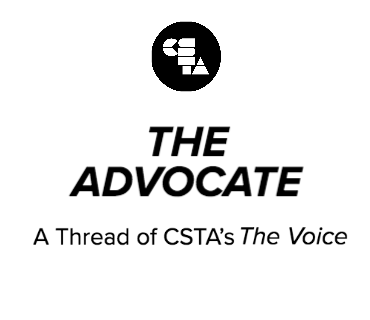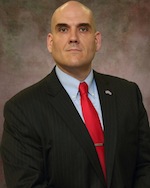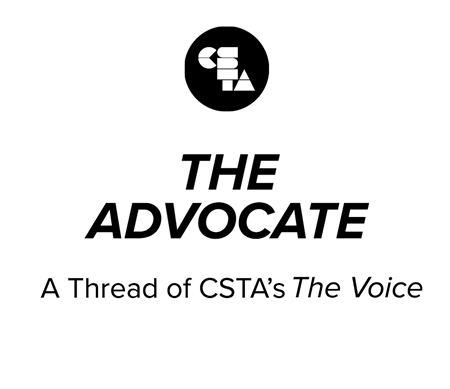
“Don’t tell me what things look like. Tell me what things are.”
Full Story
“Don’t tell me what things look like. Tell me what things are.”
Yes, I know I just mixed quotes, but let’s get to the point, and it is not to discuss The Child (AKA Baby Yoda). This blog was supposed to come out around the first of December, but I requested that I be able to delay it until after Computer Science Education Week, because I knew that I would want to highlight our announcements during that week and also speak to the state’s 5-year report on the #ARKidsCanCode / #CSforAR Initiative that was just released in early January.
CS Education Week 2019 (CSedWeek) was again a great success in Arkansas. In the past years, we had made it a point to make one announcement each day of the week. This year we started early, with a Gubernatorial kickoff on Friday, December 6th, and had multiple announcements each day of the following week. While I will not discuss them all in this blog, I invite you to go view the full listing and details at http://bit.ly/ARCSedWeek. However, I do want to highlight a few of the announcements.
One of the reasons for Gov. Asa Hutchinson wanting to personally acknowledge CSedWeek by means of a press conference, was that he, by executive order, reestablished our advisory CS taskforce. The newly titled Computer Science and Cybersecurity Task Force, is the natural progression of the Arkansas Computer Science and Public Technology Task Force, that was established in 2015 by legislation and sunset in 2016. The original task force provided our state and my office with the guidance and suggestions that have shaped our computer science (CS) initiative over the past five years. The reestablished CS task force will be chaired by Gov. Hutchinson’s Deputy Chief of Staff Mr. Bill Gossage, who also carried and championed the 2015 computer science legislation that established the mandate that all Arkansas high schools offer CS, is held up as a model by Code.org, and put Arkansas on the right pathway to lead this crucial educational initiative. This new task force, which had its first meeting on January 8, 2020, will “provide guidance on improving and establishing updated large-scale goals and strategies; industry pathways and relevant certifications for major areas of computer science and computing; post-secondary alignment strategies and goals; work-based learning opportunities for students; teacher credentialing; correct placement and focus on data sciences and cybersecurity in curricula; potential funding usage and future needs; and outreach and development of educational materials.”
In addition, our office made two large scale announcements with three of our post-secondary institutions and other partners. The first was that we would be partnering with the Arch Ford Education Service Cooperative’s Virtual Arkansas division, the University of Arkansas at Little Rock, and the University of Central Arkansas at Conway to develop a three-year cyber security curriculum and course pathway that will be available to Arkansas public school students at the beginning of the 2020-2021 school year. The second was that the Arkansas Department of Education, Arkansas State University, and the Arkansas Public School Resource Center would partner to provide a statewide online coding curriculum starting with the fall 2020 semester. The first offering of its type to the high school students of Arkansas, the UpSkill program is designed to support the Governor’s initiative on computer science skills. The course structure leads students through a nine-month curriculum that prepares them to receive a certificate in Swift coding.
Our state and my office again demonstrates our commitment to CSTA. Not only are we continuing to fund CSTA+ membership for Arkansas educators that are CS Certified, but we again increased our commitment to the CSTA Annual Conference. This year we are increasing the number of available sponsorships to 35 and doubling the reimbursement amount to $2000. Arkansas, and I personally, place a high value on the benefits CSTA and its annual conference provides to its members; this announcement renews and puts funding behind our commitment and support.
The last announcement I want to highlight before I get to the recently released report is the creation of the Arkansas Students of Distinction in Computer Science Recognition Program. Through this program, up to 50 public, private, and homeschool, students currently in grades 11 or 12 will be recognized for their efforts in computer science education.
“Cracking the Code: How Arkansas Became a National Leader in Computer Science & Computing” (http://bit.ly/2020CSforARReport) is Arkansas’s 5-year report on the history, efforts, successes, and future of our state initiative. When we started internally discussing the need for such a report, I wondered and asked aloud, why wouldn’t we just wait on the new task force report? I am now happy that my leadership pushed back on my question and helped me see that the audience for these two reports is not the same. Once I was onboard, as many of you know about me, I couldn’t just do it in a straightforward fashion⦠we all have enough “governmental looking” reports to drown in. So, when I started working with Eric Rob & Issac (https://ericrobisaac.com/) of Little Rock to help us create the report, I told Rob in an early meeting, I want something “different,” and let me tell you they produced something that met that request.
I was sitting in my office one day about a week after that first meeting, and Rob asked if he could stop by and show me something. I knew we were going to talk layout, but what he brought me, I couldn’t have imagined. He first showed me a more straightforward layout proposal, which was wonderful, but looked like any of 100 other governmental reports. Then he said, “I have something else to show you, but I want to know first how crazy you want to go on this.” I responded, “let’s see it.” What he pulled out of his bag looked like a paper computer complete with logo stickers, scuff marks, and other telltale signs that this “computer” belongs to our community. I immediately fell in love with it. As we talked about how the sections could be designed, I got more excited. Toward the end of the meeting, Rob looked at me and said, “So which one are we going with? Or do you need to get back with me?” Rob knows I have leadership that I have to answer to; however, this is one of those times I took a gamble and decided instantly to go with the “out there” option. I am happy to report, I still have a job, and my leadership also loves the design. While our office provided all of the information, Rob’s team did a great job of turning that extremely long text dense document into something that is informative but also fun to digest.
So, what does all this mean and why am I sharing it? Well first, as I said in one of my previous blogs, I do enjoy bragging on my state and our initiative, but it is more than that. It is meant as an example and challenge to the greater CS education community leaders and decision-makers. We can not stop! We can not be content! We must continue to engage our community partners, look to expanding our efforts beyond K-12, and press on with the “new”, the “out there”, the “crazy”, and the “different.” Otherwise, this will just become another fad that fades into the ever-increasing list of educational initiatives that like a sparkler in the night, flares up, burns brightly for a time, but then as quickly dies and, to the viewer, leaves the scene darker than it was before. “I have spoken.”
 Anthony Owen
Anthony Owen
 Anthony Owen
Anthony OwenState Department Representative




